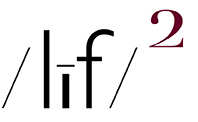all photos (embiggenable)
“I’m always amused by the idea that certain people have about technique, which translate into an immoderate taste for the sharpness of the image. It is a passion for detail, for perfection, or do they hope to get closer to reality with this trompe I’oeil? They are, by the way, as far away from the real issues as other generations of photographers were when they obscured their subject in soft-focus effects.” ~ Henri Cartier-Bresson
REGULAR FOLLOWERS OF THIS BLOG HAVE PROBABLY noticed there have been more entries posted than is usual. That is most likely do to my new proclivity for using quotes to introduce one topic or another. FYI, as mentioned previously, I have collected quite a number of quotes from the interweb and from photo book––monographs––intros / prefaces / reviews. They act as a kinda instigator for entry topics, so much so that rarely have words poured from my penny pencil with such feverish fluidity.
Be that as it may, today’s topic was not instigated by the above HBC quote––I dug that out after I encountered the real instigator; today’s entry on T.O.P. in which M. Johnston made know his opinion, re: too much sharpness, resolution, micro contrast, et al known, i.e. he, like my own self, don’t like it at all.
Having written on the topic numerous times, I am disinclined to do so again. However, as an addendum to my previous thoughts on the subject, let me add this idea; the addiction to sharpness / resolution to-the-max is just one of many picture making afflictions embraced by those who are “as far away from the real issues” as possible. Just like the band Spinal Tap, who play their music with their amp volumes set to “11”, these dreck-conian picture makers have never seen a slider––hue & saturation, sharpness, vibrance, et al––that they don’t set to “11”. They often refer to that proclivity as “being creative”. Ha. Enough written on the topic.
FYI, one possible reason I have posted more often than usual is that the wife and I are headed to New Mexico tomorrow for some R’nR. Staying for a few days in a modest Pueblo-style, hot spring resort. Then on to Santa Fe for 2 days and a night for some luscious food and some culture. Followed by a visit to Denver to visit with some friends and family. That being so, I kinda think I’ve been cramming in a bunch of thoughts on some virtual paper before heading out.
In any event, I will post while I’m away although it might be more pictures than words.
BTW, writing about sharpness, the picture with the budding maple tree was made through a back porch screen. A “diffusion” filter, if you will. I didn’t have any other choice of making that picture from the same vantage point without involving a step ladder. iMo, it gets the point across quite effectively without any sharpness to-the-max.

